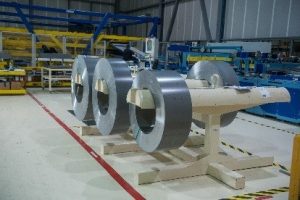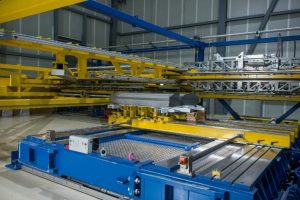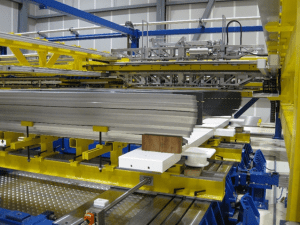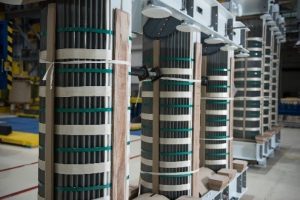Transforming Energy for America
E-Stacker
The core is the part of the transformer where the magnetic field oscillates.
Core material is a high-grade, grain-oriented steel with a small percentage of silicone. This is to minimize the energy losses that create heat. The core steel is rolled into thin sheets, approximately 20 gauge, and each side is coated with insulating material. The purpose of these thin sheets is to further minimize losses. For power transformers, these sheets are stacked together with mitered/step-lap joints; by varying the width of steel laminations in the leg of mitered core, a circular cross section can be approximated. The process involves core cutting and stacking equipment to construct the core. Automatic core cutting machines have become standard for power transformer cores. The stacking of the core requires extra care and precision. The following factors should be considered when stacking:
- Gap at the step lap needs to be small — under 2mm
- Control of burrs — thin, steel threads that break loose in oil and create partial discharge later
- Square control and perpendicularity of magnetic circuits
- Tightness of core to reduce noise levels
Manual stacking is a common practice in the industry, but it can be cumbersome, time-consuming, and prone to errors. At VTC, we recognize the potential for mistakes and plan ahead to prevent them. Our technicians are highly trained to minimize risk during the assembly process.
Our plant in Rincon, GA features an advanced Astronics core cutting assembly unit. It allows precise cutting of single- and multi-leg transformer cores.
Integrated with the core cutter is an automated E-stacker. The E-stacker stacks the core steel into its final position as it is cut. This technique practically eliminates human errors and minimizes losses. The E-stacker increases the reliability and efficiency of our transformers. At other VTC plants, different versions of core stacking are used.




